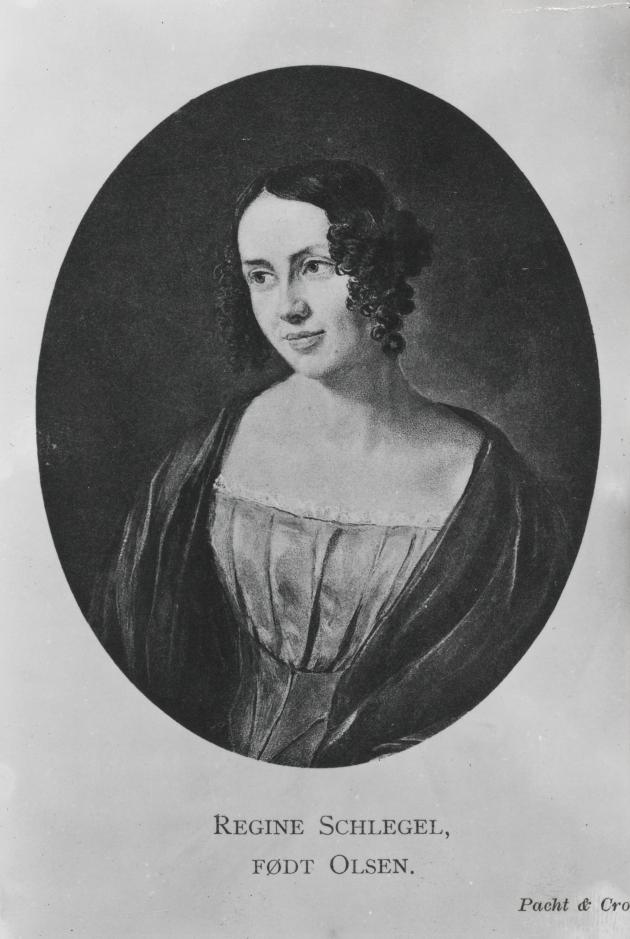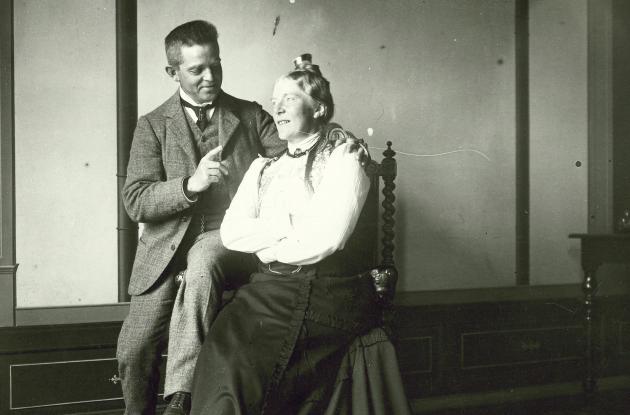Valentine's Day
Valentine's Day is a very new tradition in Denmark. But we have lots of older, romantic traditions in Denmark, such as love letters and binding letters. We take a loving look at the celebration of love.

Photo: Pacht & Crone
Flowers, chocolates and love letters with declarations of love for one's chosen one. We associate that with Valentine's Day, but of course we have had love letters long before Valentine's Day came to Denmark in the 1990s from the US.
Binding letters and love letters
From the 17th century to the 19th century, binding letters were popular among young Danish people who wanted to tease each other. You placed your letter in a place where you knew the recipient would find it and thus "bound" the recipient. The letter often contained an unsolvable knot, or was shaped as a knot that could not be untied. The receiver had to untie the knot in the binding letter, and if he failed, the receiver owed a reward to the sender. It could, for example, be to hold a party to which the sender was invited. The custom was used both among friends and lovers.
Binding letters are just one form of love letter. In the library's large collection of over two million letters, there are many love letters exchanged between spouses and lovers alike. Letters written and sent by secret admirers, unhappily in love, and happy lovers, expressing in the most heartfelt way the many forms of love.
In our collections you will find, among other things, love letters from Søren Kierkegaard to Regine Olsen, letters from Tove Ditlevsen to Victor Andreasen and from Carl Nielsen to Anne Marie Nielsen. The letters provide a unique insight into romantic relationships, which often had great significance for the writers' artistic work.
In an age where e-mails and text messages have become the dominant form of communication, and where a heart-shaped emoji can do for a declaration of love, the handwritten love letter has become a rarity and therefore also something very special.
The celebration of Valentine's Day thus helps to keep alive the tradition of handwritten love letters.
A somewhat touching and romantic custom related to 14 February has been common in Scotland and England since the Middle Ages, and it is still known today amongst English-speaking people all over the globe. The day is called Valentine's Day...
Why do we celebrate Valentine's Day?
14 February is the saint's day of Saint Valentine, who was a Roman saint in the 3rd century. Saint Valentine was sentenced to death by the Roman emperor, Claudius, and made a martyr. He was buried on 14 February, and since the 8th century this day has been celebrated as Saint Valentine's Day.
But how did Saint Valentine's Day actually become a celebration of love?
Basically, we do not know much about Saint Valentine's life, but we can trace the modern celebration of Saint Valentine's Day back to the English medieval writer Geoffrey Chaucer, who in the 14th century first connected the saint Saint Valentine and the day of 14 February with love.
Since the Middle Ages, there have been several stories connecting Saint Valentine with love and marriage. Among other things, the story that Saint Valentine should have married soldiers with their chosen ones in secret ceremonies. Or that Saint Valentine wrote a last letter to his beloved before his execution and signed it: "Your Valentine".
All in all, even to this day Saint Valentine is a figure shrouded in mystery. And perhaps that is precisely why he has become a symbol of the unspoken, semi-secret and budding love.
